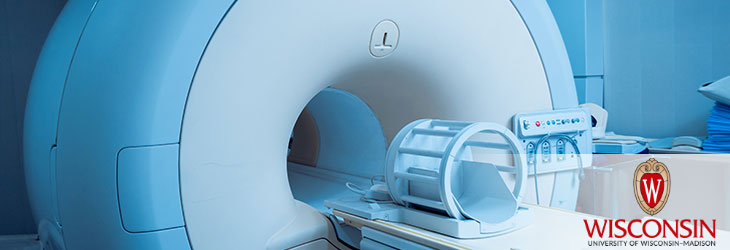Radiation Therapy

Compound to Protect Against Radiation Exposure
WARF: P120378US03
Inventors: William Fahl
The Wisconsin Alumni Research Foundation (WARF) is seeking commercial partners to help develop a new radioprotective molecule that suppresses DNA damage/cancer linked to medical scans and lacks the severe side effects of the drug amifostine (Ethyol).
Overview
Some commonly used diagnostic and interventional radiology procedures, principally CT scans and angiography, can expose individuals to levels of radiation that have been associated with excess cancer induction in multiple groups studied over the past 50 years. The risk of developing cancer due to these procedures is a significant concern for practicing radiologists and the broader cancer community. The National Cancer Institute estimated that the 70 million CT scans performed in the United States in 2007 could yield 29,000 future cancer cases. Alarmingly, about two percent of the 1.4 million cancers diagnosed every year in the U.S. could be related to CT scans.
A ‘radioprotective’ compound called amifostine is available to patients receiving cancer chemotherapy or radiology to protect them against high levels of radiation exposure. Unfortunately, the drug causes severe nausea and fainting in a large majority of treated cancer patients, and because of this, is not a plausible candidate for use as a systemic radioprotector in the 85 million U.S. residents who received CT scans in 2011.
A ‘radioprotective’ compound called amifostine is available to patients receiving cancer chemotherapy or radiology to protect them against high levels of radiation exposure. Unfortunately, the drug causes severe nausea and fainting in a large majority of treated cancer patients, and because of this, is not a plausible candidate for use as a systemic radioprotector in the 85 million U.S. residents who received CT scans in 2011.
The Invention
A UW–Madison researcher has developed a new family of aminothiol molecules that could prevent tumor formation or DNA damage due to radiation exposure. The well-studied prototype molecule is called PrC-210. It has been demonstrated to suppress CT scan X-ray-induced DNA damage in human blood cells to background. This would likely also suppress cancers resulting from diagnostic radiation to background. Importantly, the new drug lacks both of the severe side effects (nausea/emesis and hypotension/fainting) that preclude the use of amifostine.
The new molecules’ radioprotective properties arise from the combination of a reactive oxygen species (ROS)-scavenging thiol group and a positively charged alkyl-amine backbone that allows the molecule to “hover” around the negatively-charged DNA backbone in cells where the thiol can then capture ROS before they attack DNA.
A decade of research, multiple peer-reviewed publications, both issued and pending patent claims, and more than $2.5 million in research support has gone into PrC-210 development to date.
The new molecules’ radioprotective properties arise from the combination of a reactive oxygen species (ROS)-scavenging thiol group and a positively charged alkyl-amine backbone that allows the molecule to “hover” around the negatively-charged DNA backbone in cells where the thiol can then capture ROS before they attack DNA.
A decade of research, multiple peer-reviewed publications, both issued and pending patent claims, and more than $2.5 million in research support has gone into PrC-210 development to date.
Applications
- New radioprotective compounds
- For 85+ million U.S. patients prior to undergoing medical CT-scans each year, soldiers or first-responders in radioactively contaminated settings, astronauts exposed to space radiation, and other patients in settings where toxic ROS are generated (e.g., heart attack, stroke, etc.)
Key Benefits
- Has been demonstrated to be safer and more effective than amifostine
Stage of Development
In several preclinical animal models, either oral or intravenous PrC-210 conferred 100 percent survival against a whole-body radiation dose that was otherwise 100 percent lethal to mice or rats. CT scan X-ray-induced DNA strand breaks in human blood lymphocytes were reduced to background by addition of PrC-210 to blood just prior to irradiation.
Ferrets or rats that received the equivalent of the highest likely human PrC-210 dose exhibited no vomiting (ferret) or hypotension (rats) whereas amifostine elicited both undesirable side effects in these animal models.
Ferrets or rats that received the equivalent of the highest likely human PrC-210 dose exhibited no vomiting (ferret) or hypotension (rats) whereas amifostine elicited both undesirable side effects in these animal models.
Additional Information
For More Information About the Inventors
Related Technologies
Tech Fields
For current licensing status, please contact Rafael Diaz at [javascript protected email address] or 608-960-9847